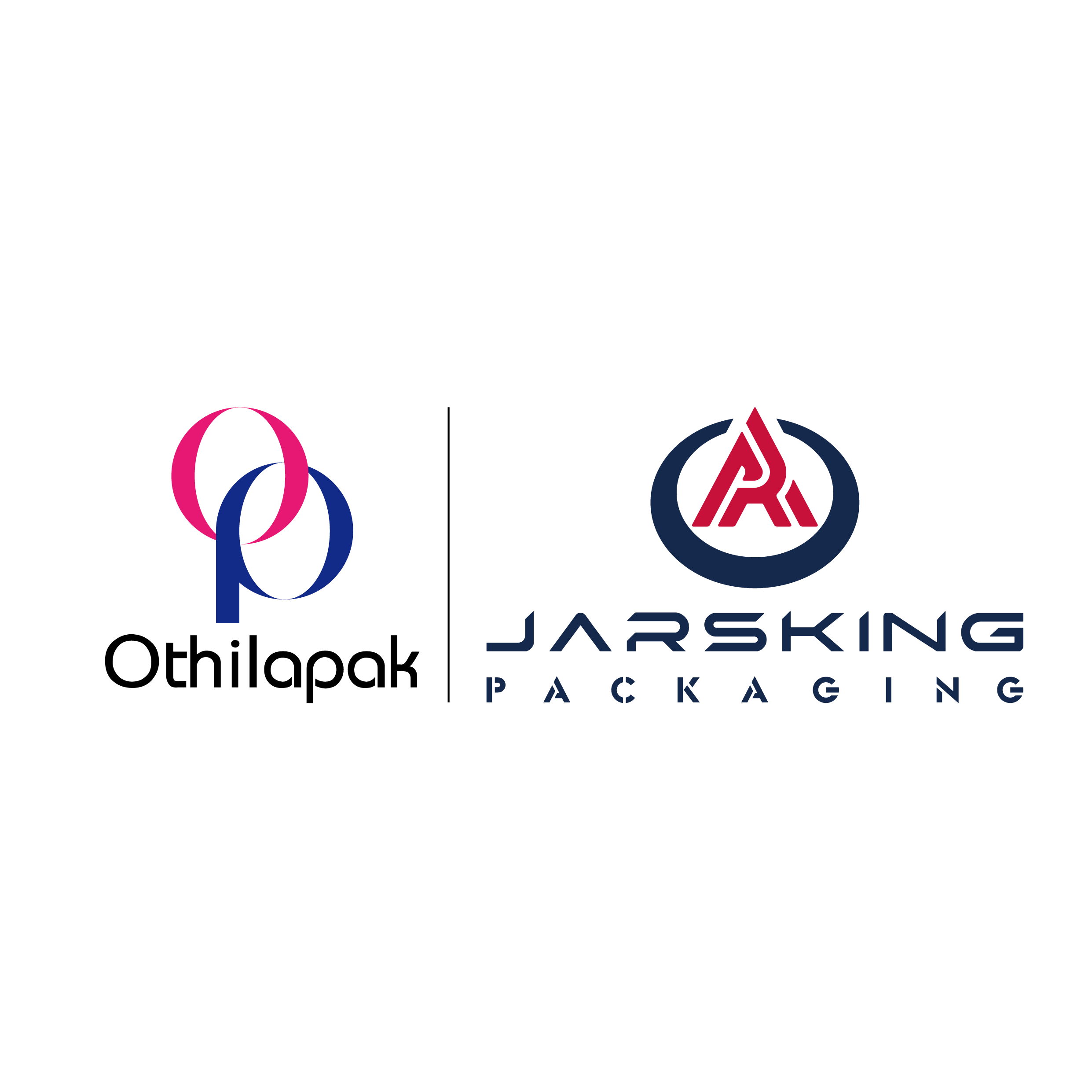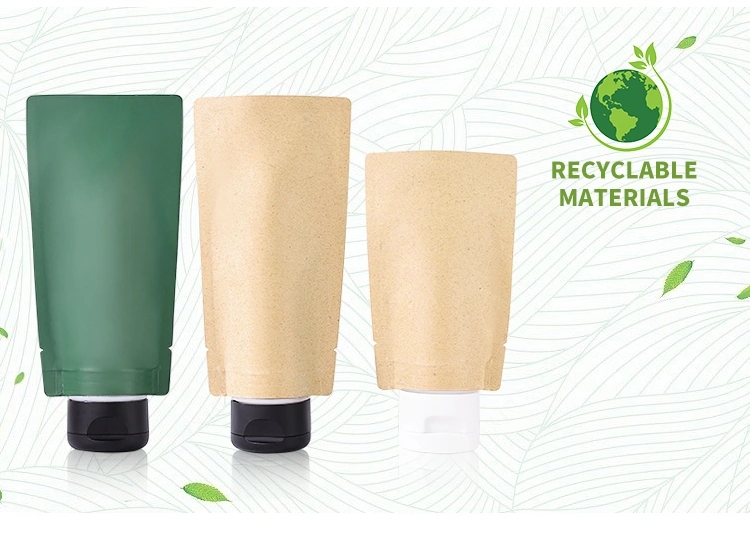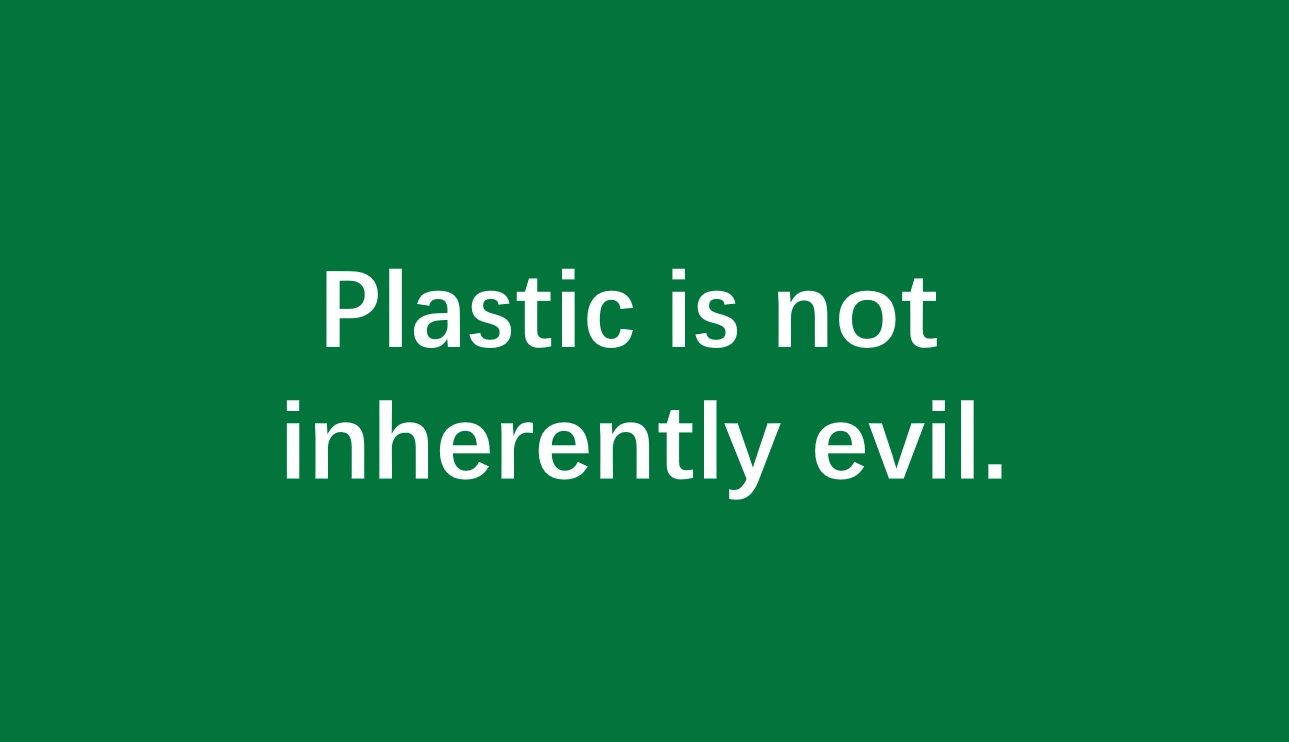
Plastic has revolutionized our lives, offering unparalleled convenience and versatility. From the containers that keep our food fresh to the medical devices that save lives, plastic has become an integral part of modern living. However, the environmental toll of plastic waste is undeniable. The very material that has brought us so much convenience is now posing a significant threat to our planet, particularly our oceans.
In recent years, celebrities have taken up the mantle of environmental advocacy, using their platforms to raise awareness about the urgent need for ocean conservation. What starts as one person’s commitment can quickly grow into a collective movement. When a celebrity participates in a public service program focused on environmental protection, it inspires countless others to join the cause. This ripple effect is crucial in amplifying the message and encouraging more people to take action.
Imagine participating in a beach cleanup and finding items like refrigerators, toothbrushes, mattresses, cutting boards, helmets, and even detached limbs of mannequins and flip-flops. These are not just random objects; they are all made of non-biodegradable plastic. Such scenes are a stark reminder of how pervasive plastic pollution has become. Plastic has infiltrated every corner of our lives, offering convenience but leaving a trail of environmental destruction in its wake.

Brands Taking the Lead in Environmental Protection
Recognizing the urgent need for change, many brands are stepping up to the plate, implementing innovative solutions to reduce their environmental footprint.
Starbucks, a global coffee giant, serves approximately 2 billion cups of coffee daily, generating around 6 million tons of coffee grounds annually. Traditionally, these coffee grounds are discarded as waste, contributing to environmental pollution. However, in a groundbreaking move, Starbucks introduced coffee ground straws for cold beverages on Earth Day, April 22, 2021. Dubbed “Zha Zha Straws,” these eco-friendly alternatives are a step towards reducing plastic waste.
On World Environment Day in 2021, Jin Dian, in collaboration with Tetra Pak, launched a revolutionary “sugarcane bottle cap.” This made Jin Dian Organic Milk the first domestic product to use a plant-based cap derived from sugarcane. This initiative not only reduces reliance on traditional plastic but also sets a new standard for sustainable packaging in the industry.
In 2019, Vietnamese designers Son Chu and Jesse Tran launched the world’s first sneakers made from coffee grounds and recycled plastic on Kickstarter — the #Rens coffee sneakers. Each pair utilizes 300g of coffee waste and six recycled plastic bottles, offering odor resistance, antibacterial properties, and UV protection. This innovative design not only enhances comfort and durability but also aligns with sustainable fashion trends.
Similarly, Japanese footwear brand ccilu introduced the XpreSole™ waterproof casual shoes, crafted using coffee grounds. Each pair repurposes the waste from approximately five cups of coffee, creating lightweight, eco-friendly footwear. By embracing coffee grounds as a resource, these brands are paving the way for a greener future in fashion.

Luxury Meets Sustainability: How High-End Brands Are Embracing Eco-Friendly Packaging
Additionally, Chinese brands such as 361°, ANTA, and Li-Ning have introduced eco-friendly product lines featuring coffee-infused materials. The widespread use of coffee grounds in fashion not only promotes sustainable trends but also reflects brands’ commitment to environmental responsibility.
The journey towards environmental protection is a collective effort. From individual actions to corporate initiatives, every step counts. Plastic, while not inherently harmful, has become a symbol of our throwaway culture. By rethinking how we use and dispose of plastic, and by supporting brands that prioritize sustainability, we can mitigate its environmental impact. Together, we can turn the tide on plastic pollution and work towards a healthier, more sustainable planet.
In the world of luxury beauty and fashion, sustainability is no longer just a trend—it’s a necessity. As consumers become increasingly aware of the environmental impact of their purchases, high-end brands are stepping up to the challenge. From innovative materials to groundbreaking partnerships, the industry is undergoing a transformation that marries opulence with eco-consciousness. In this blog post, we’ll explore how some of the most iconic brands, including CHANEL, LVMH, and SHISEIDO, are redefining luxury through sustainable packaging.
CHANEL has always been synonymous with elegance and sophistication. With the launch of its new No. 1 Camellia line, the brand is taking a bold step towards sustainability. The bottle, crafted from lightweight eco-friendly glass, is a testament to CHANEL’s commitment to reducing its environmental footprint. But the innovation doesn’t stop there. The bottle cap is made from up to 90% bio-based materials, and the packaging is printed with eco-friendly ink. This combination of luxury and sustainability sets a new standard in the beauty industry.
LVMH, the conglomerate behind some of the most prestigious names in beauty and fashion, has announced its participation in Avantium’s PEFerence consortium. This initiative aims to develop plant-based, recyclable PEF (polyethylene furanoate) packaging for LVMH’s portfolio of brands, including Christian Dior and Marc Jacobs. PEF is a revolutionary material derived from renewable resources, offering a sustainable alternative to traditional petroleum-based plastics. By joining this consortium, LVMH is not only enhancing its sustainability credentials but also paving the way for the entire industry to adopt more eco-friendly practices.
WASO, a product line under the SHISEIDO brand, exemplifies the perfect blend of science and nature. The packaging for WASO products is a marvel of sustainable engineering. The bottle caps are made from 30% rice husks, the bottle bodies are composed of 95% recycled plastic, and the tubes are made from 10% plant-based plastic. This innovative approach not only reduces waste but also leverages natural materials to create packaging that is both functional and environmentally friendly.
The shift towards sustainable packaging in the luxury beauty and fashion industry is more than just a marketing strategy—it’s a reflection of a broader cultural change. Brands like CHANEL, LVMH, and SHISEIDO are leading the way, proving that it’s possible to maintain the highest standards of quality and elegance while also being mindful of our planet’s health. As consumers, we have the power to support these initiatives by choosing products that align with our values. Together, we can make a difference, one luxurious, eco-friendly product at a time.

Ulé: Shiseido’s Pioneering Vertical Farming Beauty Brand Redefining Conscious Beauty
In a world where sustainability is increasingly vital, the beauty industry is undergoing a transformative shift. Leading this change is Ulé, an innovative skincare brand launched in May 2022 in Paris, France. As part of Shiseido’s forward-thinking initiatives, this groundbreaking brand merges beauty, technology, and environmental responsibility — redefining what it means to create beauty in harmony with nature.
Ulé is the brainchild of Lindsey Azpitarte, a ten-year veteran of Shiseido. With the company’s backing, Lindsey began developing this project in 2019, envisioning a skincare line that would embrace plant power while emphasizing sustainability, traceability, and innovation. The result is a brand that seamlessly blends nature with advanced technology.
At the heart of the brand’s philosophy is its proprietary Ulé Eco Farm, a state-of-the-art vertical farm near Paris. This revolutionary technique grows plants in stacked layers within a controlled indoor environment. Vertical farming offers unmatched ecological benefits, efficiency, and safety. By cultivating plant ingredients in-house, the brand ensures exceptional purity, freshness, and a remarkably short supply chain.
“We are the first skincare brand to create the future of plant-based beauty through vertical farming. In France, we grow and extract ultra-potent whole plants from around the world in our own farm,” explains Lindsey Azpitarte.

Operating like a protective cocoon, the farm provides an environment tailored to each plant’s needs, shielding crops from pollutants and ensuring optimal growth conditions. This meticulous process results in potent botanical extracts that power Ulé’s skincare formulas.
Eco-consciousness extends throughout the brand’s operations. Its formulations and packaging are proudly 100% made in France, reinforcing a commitment to local production and minimizing carbon emissions.
Packaging is thoughtfully designed with lightweight bottles and biodegradable caps made from wood chips sourced from industrial byproducts and plant-based binders. These innovative caps break down naturally without leaving harmful microplastics, blending sustainability with aesthetic appeal through their textured, fiber-embedded finish.
Ulé’s dedication to nature shines through every step of its process — from responsible farming to eco-friendly packaging. By combining advanced technology with sustainable practices, the brand is proving that luxury skincare can be both high-performance and planet-friendly.
As Lindsey Azpitarte notes, “Once truly eco-friendly alternatives that don’t compromise on quality become available, consumer habits can become more sustainable. We need pioneers like this to set an example for others.”
By championing vertical farming and sustainable packaging, Ulé is setting a new benchmark for conscious beauty. Its innovative approach highlights that caring for our skin can also mean caring for the planet — a powerful reminder that small steps toward sustainability can create lasting change.
As consumer increasingly prioritize environmentally conscious choices, brands like Ulé are paving the way for a future where beauty and sustainability go hand in hand.

Watsons: Leading the Way in Sustainable Beauty and Health Retail
In today’s eco-conscious world, Watsons is redefining what it means to “Look Good, Do Good, Feel Great.” This commitment to sustainability drives the brand’s efforts to integrate eco-friendly practices into its operations, proving that environmental responsibility can go hand in hand with business success.
Watsons’ green initiatives focus on three key areas: reducing plastic waste, embracing plant-based materials, and promoting responsible consumption.
- Plastic Reduction: The brand is cutting plastic usage by adopting innovative alternatives like PLA (polylactic acid) and sugarcane bagasse, both biodegradable materials that reduce reliance on fossil fuels.
- Plant-Based Materials: By sourcing ingredients and packaging from renewable resources, Watsons minimizes its carbon footprint while supporting biodiversity.
- Eco-Friendly Choices: Watsons encourages customers to choose sustainable products across its diverse offerings, making green choices more accessible.
The brand is also prioritizing recycled materials and minimizing over-packaging to reduce waste and conserve resources.
Through these efforts, Watsons is setting a new standard in the health and beauty industry, empowering consumers to make positive environmental choices while demonstrating that sustainability is a shared responsibility.
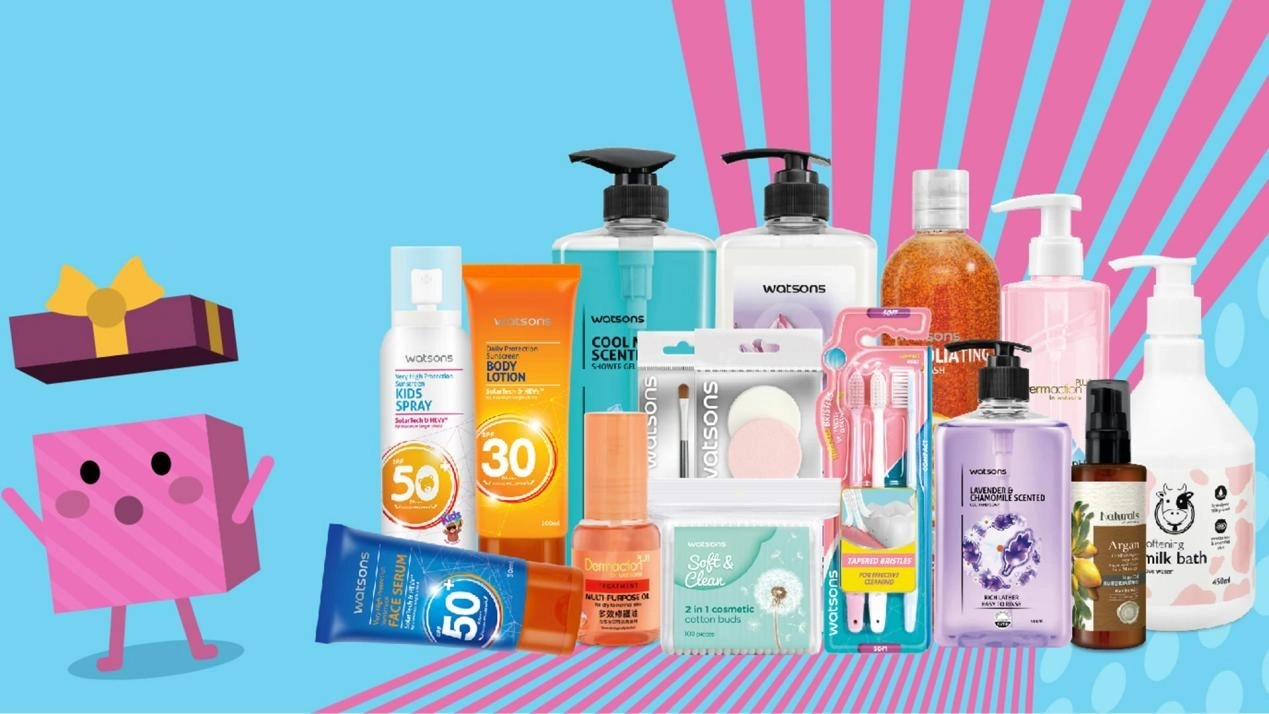
Clean Beauty Defined: Tmall Global and COSMOHITS Set the Standard in China
In August 2021, Tmall Global, in collaboration with the authoritative beauty media COSMOHITS, took a groundbreaking step in the Chinese beauty industry by clearly defining Clean Beauty for the first time. This initiative aims to provide consumers with a transparent and trustworthy framework for understanding what clean beauty truly means. The definition encompasses four core principles: harmless ingredients, environmental friendliness, animal welfare, and sustainable practices. By setting these standards, Tmall Global is leading the charge towards a more ethical and sustainable beauty industry in China.
- Harmless Ingredients: Zero Additives– No parabens, plasticizers, or artificial fragrances.
Clean beauty products must be free from harmful or controversial ingredients. Tmall Global’s definition specifies that clean beauty products should exclude six major controversial components:
Parabens (preservatives)/Plasticizers/SLS (sodium lauryl sulfate, a surfactant)/Mineral oil/Silicone oil/Artificial fragrances
By avoiding these ingredients, clean beauty products ensure they are safe for consumers and gentle on the skin.
- Animal Welfare: Zero Cruelty– No animal testing or animal-derived ingredients.
Clean beauty is synonymous with cruelty-free practices. This means that products must not be tested on animals, nor should they contain any animal-derived ingredients. Tmall Global’s clean beauty standards emphasize no animal testing and no animal ingredients, aligning with the growing global demand for ethical beauty products.
- Environmental Friendliness: Zero Harm– Sustainable sourcing and responsible production.
Clean beauty goes beyond personal care—it also considers the impact on the planet. Products must be environmentally friendly, meaning they should not harm ecosystems or contribute to environmental degradation. For instance, clean beauty brands are encouraged to avoid using non-RSPO certified palm oil and instead opt for sustainably sourced palm oil that is produced, procured, and traded in an eco-conscious manner.
- Sustainable & Zero Waste – Recyclable and biodegradable packaging materials.
Sustainability is a key component of clean beauty. Brands are encouraged to adopt eco-friendly packaging that is either recyclable or biodegradable. This reduces waste and minimizes the environmental footprint of beauty products. By prioritizing sustainable practices, clean beauty brands contribute to a circular economy and a healthier planet.
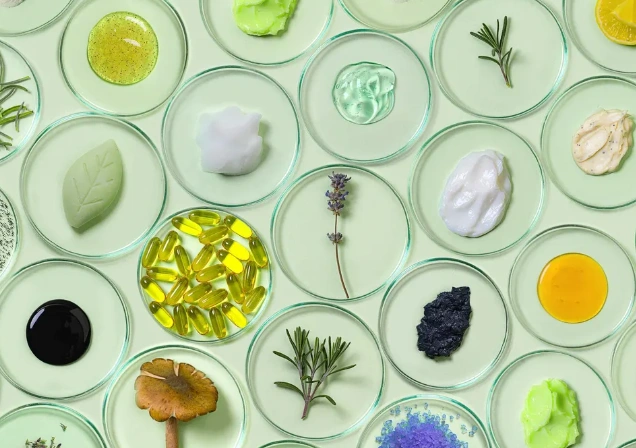
Consumers today are more informed and conscientious than ever before. They want to know what goes into the products they use and how these products impact the world around them. By defining clean beauty, Tmall Global and COSMOHITS are addressing this demand for transparency and accountability in the beauty industry.
The clean beauty movement is not just a trend—it’s a global shift towards more ethical and sustainable consumption. By adopting these standards, Chinese brands can align themselves with international best practices and appeal to a broader, more conscious audience.
Tmall Global’s clear definition of clean beauty empowers consumers to make informed choices. By understanding the four pillars of clean beauty, shoppers can confidently select products that align with their values, whether it’s avoiding harmful ingredients, supporting animal welfare, or protecting the environment.
One brand that exemplifies the principles of clean beauty is UTY. Committed to harmless ingredients, cruelty-free practices, and sustainable packaging, UTY is setting a high standard for clean beauty in China. By avoiding controversial ingredients and using eco-friendly materials, UTY is proving that beauty can be both effective and ethical.
As a leading e-commerce platform, Tmall Global plays a crucial role in promoting clean beauty. By partnering with brands like UTY and collaborating with media outlets like COSMOHITS, Tmall Global is driving awareness and adoption of clean beauty standards across China. This initiative not only benefits consumers but also encourages brands to innovate and prioritize sustainability.
The clear definition of clean beauty by Tmall Global and COSMOHITS marks a significant milestone in the Chinese beauty industry. By focusing on harmless ingredients, animal welfare, environmental friendliness, and sustainable practices, this initiative is setting a new standard for ethical and responsible beauty. As more brands and consumers embrace these principles, the future of beauty in China looks brighter, cleaner, and more sustainable.

Despite economic downturns during the COVID-19 pandemic, clean beauty sales rose by 11%, proving its growing market relevance. The global market is projected to reach $11.56 billion by 2027, with China playing a key role in this transformation.
Reducing plastic waste extends beyond consumer goods. Innovations in material science are driving eco-friendly alternatives:
Industrial & Home Composting: Developing bioplastics that decompose in controlled environments.
Marine-Degradable Materials: Plastics designed to break down in oceanic conditions without leaving harmful residues.
Calcium Carbonate-Based Plastics: Utilizing limestone-derived compounds to create sustainable packaging that retains durability while being biodegradable.
Biogas Electricity & Low-Carbon Containers: Harnessing renewable energy and efficient production techniques to lower carbon footprints.
The future of packaging is not about eliminating plastic but redefining its role in a sustainable economy. Companies embracing innovative materials, responsible production, and circular economy principles are setting new industry standards. As businesses and consumers become more conscious of their environmental impact, the shift towards eco-friendly packaging will continue to accelerate, ensuring that plastic—when used responsibly—can be part of a sustainable future rather than an environmental burden.
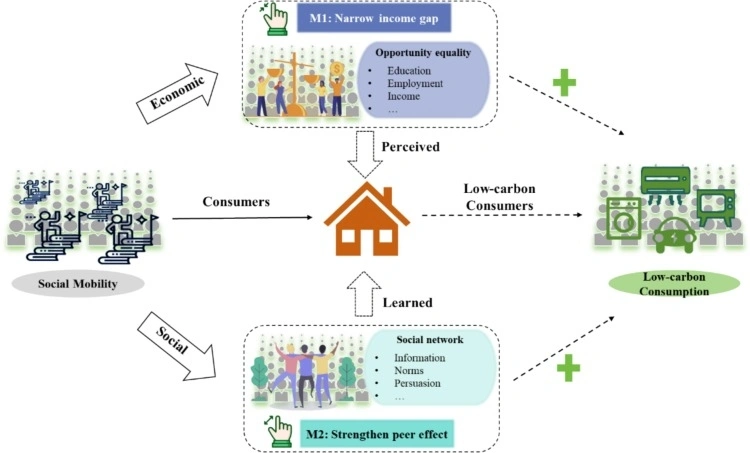
The data highlights the growing awareness and adoption of low-carbon behaviors among young Chinese people. Here are some key insights:
- High Engagement in Green Travel and Reducing Plastic:76% of young Chinese people engage in green travel, which could include using public transportation, cycling, or walking. 73% actively reduce plastic usage, reflecting a strong commitment to minimizing environmental pollution.
- Significant Increases in Specific Behaviors:Behaviors like “choosing no tableware,” “choosing new energy appliances,” and “buying environmentally friendly products” have seen notable increases over the past 2-3 years. This suggests a shift towards more sustainable consumption patterns.
- Energy and Resource Conservation:71% of respondents save water and electricity, indicating a conscious effort to reduce energy consumption. 67% focus on reducing food waste, which is crucial for lowering carbon emissions associated with food production and disposal.
- Waste Management:56% take away garbage when outdoors, and the same percentage practice garbage sorting, showing a commitment to proper waste disposal and recycling.
- Participation in Low-Carbon Activities:53% choose not to use disposable tableware, and 50% opt for new energy appliances and simple packaging. 48% extend the service life of items, and 45% buy environmentally friendly products, reflecting a preference for durable and sustainable goods.
- Health and Safety Concerns:The quote about replacing everyday grains and oils with zero-additive organic and traceable foods highlights a dual focus on personal health and environmental sustainability. This trend towards organic and traceable products is likely driven by concerns over food safety and a desire for healthier lifestyles.
- Implications:Policy and Education: The data suggests that young Chinese people are receptive to low-carbon behaviors, which could be further encouraged through targeted policies and educational campaigns.
- Market Opportunities: There is a growing market for sustainable products, such as organic foods, environmentally friendly goods, and new energy appliances. Businesses can capitalize on this trend by offering more sustainable options.
- Community Engagement: The high participation in low-carbon activities indicates that community-based initiatives can be effective in promoting sustainability.
Overall, the data reflects a positive trend towards more sustainable living among young Chinese people, driven by a combination of environmental awareness, health concerns, and a desire for safer, more sustainable products.
Calcium Carbonate Materials: The Future of Eco-Friendly Customization, Spray-Free Processes, and Sustainable Packaging Innovation
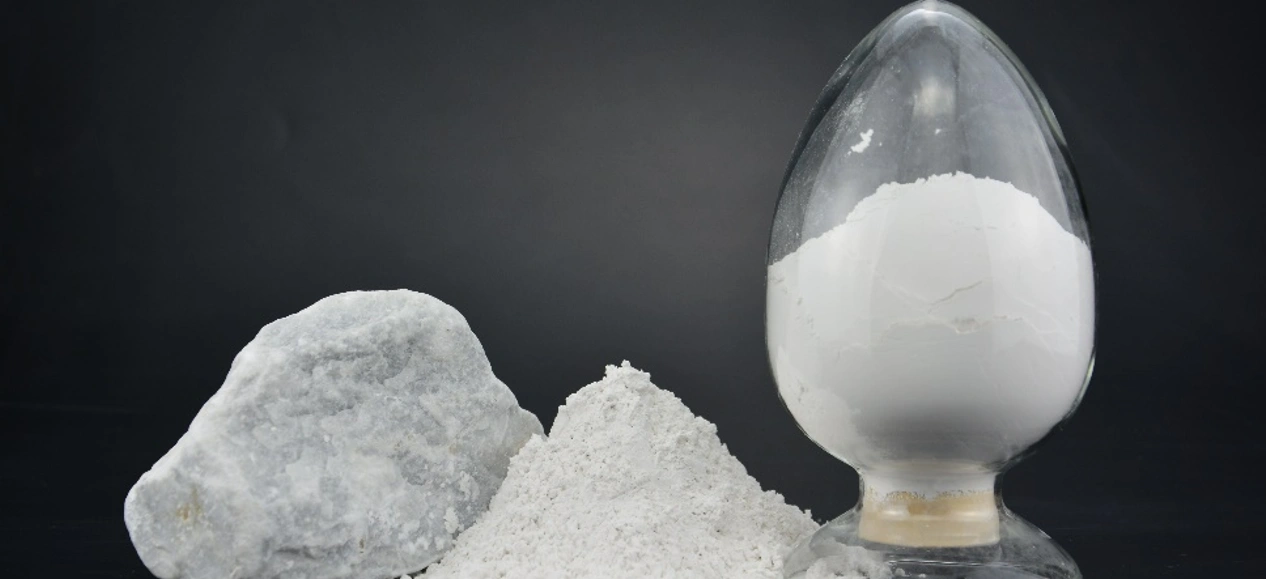
The integration of calcium carbonate (CaCO₃) into sustainable packaging and product design is a growing trend in various industries, particularly in cosmetics, personal care, and food sectors. This inorganic compound, derived from natural sources like limestone, marble, and chalk, is not only environmentally friendly but also versatile in its applications. Below is an analysis of how calcium carbonate is being utilized to drive sustainability, brand value, and consumer trust:
Calcium carbonate-based packaging is designed to be more environmentally friendly. It can be used in industrial composting or is marine-degradable, reducing plastic pollution and aligning with global efforts to combat ocean waste. Packaging made from calcium carbonate often uses single-material designs, making it easier to recycle and integrate into closed-loop recycling systems. By incorporating calcium carbonate into packaging, brands can significantly reduce plastic content while maintaining durability and functionality.
Brands like UNNY, RNW, Barbarella, and Frudia (e.g., Dr. Ei Probiotics Series) have adopted calcium carbonate packaging to elevate their brand image. This shift not only aligns with sustainability goals but also appeals to environmentally conscious consumers. For example, Yumeijing, a leading Chinese children’s skincare brand, transitioned from low-cost packaging to calcium carbonate-based materials. This allowed them to reposition their products from 2 RMB to a premium price range of 99–219 RMB, demonstrating how sustainable packaging can enhance perceived value.
The soft, smooth texture and premium feel of calcium carbonate packaging, as seen in Dexter’s moisturizer jars, resonate well with consumers, particularly parents who prioritize safety and quality. Calcium carbonate is inherently safe and non-toxic, making it ideal for products targeting sensitive demographics like children (e.g., Dexter’s moisturizers) or health-conscious consumers. Its alkaline nature and stability make it suitable for use in nutraceuticals, cosmetics, and food additives, ensuring product integrity and safety.
Calcium carbonate is widely used as a nutritional supplement and additive in dairy products, meat products, and beverages, providing calcium enrichment and acting as a stabilizer. Brands like Just Spring use calcium carbonate packaging for hair care products, emphasizing sustainability and eco-friendliness while maintaining product efficacy. Its use in medicinal products highlights its versatility and safety, further boosting consumer confidence. By replacing traditional plastics with calcium carbonate, brands contribute to carbon emission reduction and support global climate goals.
The use of recyclable and biodegradable materials minimizes waste and promotes a circular economy. While initial investments in sustainable packaging may be higher, the long-term benefits of brand loyalty, regulatory compliance, and market differentiation outweigh the costs. The integration of plant-based materials and bio-calcium (derived from natural sources) with calcium carbonate could further enhance sustainability. Advances in manufacturing processes will make calcium carbonate packaging more cost-effective and scalable.
Brands are increasingly educating consumers about the benefits of sustainable packaging, fostering a culture of eco-conscious consumption. The adoption of calcium carbonate in packaging and product design is a prime example of going with the flow—aligning with global sustainability trends while meeting consumer demands for safety, quality, and environmental responsibility. Brands like Yumeijing, Dexter, and Just Spring have successfully leveraged this material to enhance their market positioning, demonstrating that sustainability and profitability can go hand in hand. As more industries embrace this approach, calcium carbonate is poised to become a cornerstone of the low-carbon economy.

In today’s era of pursuing environmental protection and sustainable development, calcium carbonate materials are gradually becoming a star choice in the packaging industry. They not only offer brands diverse design possibilities but also reduce environmental impact and protect workers’ health by eliminating processes like spraying. Next, let’s explore the advantages of calcium carbonate materials and how they help brands achieve eco-friendly customization and sustainable development.
Traditional glass bottle spraying processes not only pollute the environment but also pose health risks to workers. Harmful gases and dust generated during spraying can cause respiratory diseases, and long-term exposure may lead to more severe health issues. The emergence of calcium carbonate materials has completely changed this landscape.
Calcium carbonate materials can achieve multi-color customization without spraying, offering brands a wide range of color options. Whether it’s fresh and elegant tones or three-dimensional marble textures, calcium carbonate can effortlessly deliver. This material is not only visually appealing but also provides a silky-smooth touch, offering users a new sensory experience.
The environmental benefits of calcium carbonate materials are one of their most prominent features. As a recyclable material, it effectively reduces plastic usage, lowers carbon emissions, and helps brands achieve sustainability goals. Additionally, calcium carbonate materials can be combined with other eco-friendly materials, such as plant fibers and polylactic acid (PLA), to further enhance their environmental attributes.

The incorporation of plant fibers not only gives packaging a more natural texture but also enables scent management customization, providing users with a relaxing and stress-relieving olfactory experience. Whether it’s decorative processes like hot stamping and screen printing, or designs featuring lychee textures and three-dimensional marble effects, calcium carbonate materials can perfectly deliver.
The durability of calcium carbonate materials makes them an ideal choice for refillable replacements. By using replaceable inner cores, brands can reduce plastic usage by up to 80%, significantly minimizing environmental impact.The combination of calcium carbonate materials with biodegradable materials like PLA further enhances their environmental performance. PLA, made from corn starch and straw starch, can completely degrade within 180 days under composting conditions, addressing carbon emissions at the source.
Calcium carbonate materials have a wide range of applications, spanning from cosmetic packaging to tableware manufacturing. Below are some typical use cases: Containers such as face cream jars, makeup remover balm jars, diaper rash cream jars, and hair mask jars made from calcium carbonate materials not only offer a full-bodied texture and substantial feel but also enhance user experience through eco-friendly pump designs. PMU Tube Biodegradable Tubes: Made from bio-calcium materials (such as seashells and eggshells), they combine environmental friendliness with practicality.
During the Beijing Winter Paralympics, calcium carbonate materials were widely used to produce fully biodegradable, contact-free tableware. These tableware items can withstand high temperatures of 130°C and low temperatures of -30°C, and can be reused up to 500 times without performance degradation.
ZhiJue Brand: Launched a PLA + rose fiber color series, combining plant-based materials with calcium carbonate to create unique packaging designs. To Summer Brand: Represented by its Alpine Tea Honey Body Serum, the brand uses packaging boxes made from recycled tea wood, with tea-white tones and granular textures that evoke the natural essence of tea. ChuXian Brand: Through eco-friendly replaceable inner core designs, the brand reduces plastic usage, practicing sustainable development.

For enterprises, integrating ESG (Environmental, Social, and Governance) principles into their operations has become key to creating competitive advantages. The application of calcium carbonate materials is an important step for companies to achieve ESG goals.
- Environmental (E)
The use of calcium carbonate materials can effectively reduce carbon emissions, lower energy consumption, and address plastic pollution. By combining with biodegradable materials like PLA, companies can further minimize their environmental footprint.
- Social (S)
The spray-free process not only protects workers’ health but also improves workplace safety. Additionally, the recyclability of calcium carbonate materials promotes the development of a circular economy.
- Governance (G)
By adopting calcium carbonate materials, companies can demonstrate their commitment to sustainability, enhance brand image, and attract more ESG-focused investors.
The emergence of calcium carbonate materials has brought new possibilities to the packaging industry. It not only meets consumers’ demands for aesthetics and texture but also helps brands achieve sustainability goals through its eco-friendly properties. From spray-free processes to refillable replacements, from plant fiber customization to biodegradable materials, calcium carbonate materials are leading a green revolution.
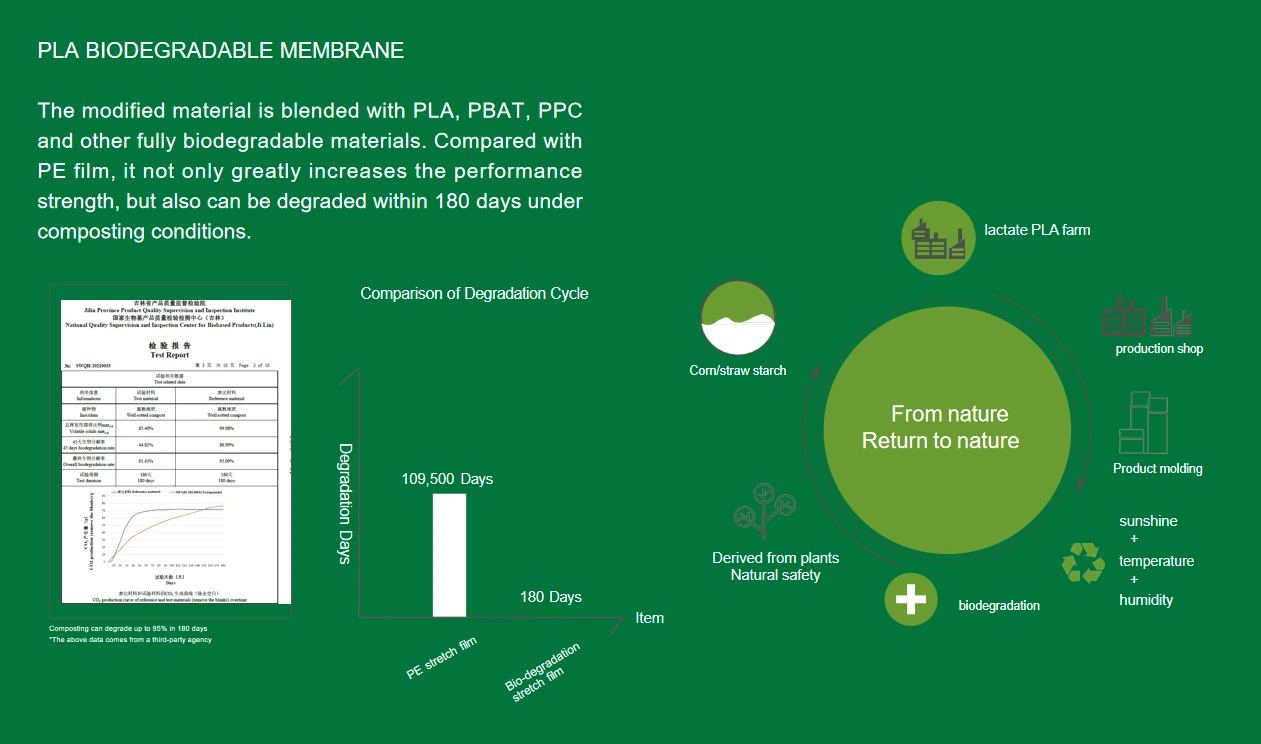
As the To Summer brand advocates, “Let nature return to nature, and return beauty to itself.” The widespread application of calcium carbonate materials is the perfect embodiment of this philosophy. In the future, with continuous technological advancements, calcium carbonate materials will undoubtedly shine in more fields, contributing to environmental protection and sustainable development.
Calcium carbonate, an essential inorganic compound, is widely known by various names such as limestone, stone powder, marble, and more. As an alkaline substance, calcium carbonate is primarily insoluble in water but dissolves readily in hydrochloric acid. Through advanced technical processing, calcium carbonate has become a key ingredient across multiple industries, from nutrition and pharmaceuticals to cosmetics and sustainable packaging solutions.
In the food and pharmaceutical industries, calcium carbonate plays a crucial role as a high-quality nutritional fortification additive. It is commonly used in dairy products, meat products, and flour-based foods, enhancing their nutritional value. In dairy milk powder, milk tablets, and beverages, calcium carbonate ensures an optimal calcium supply, promoting bone health and overall wellness. Its widespread use in health foods and dietary supplements highlights its significance in modern nutrition.
The beauty and personal care sector has also embraced calcium carbonate for its beneficial properties. Brands such as Qubai have introduced innovative cleansing concepts like the “Little Cute Egg” makeup remover, which utilizes calcium carbonate for gentle and effective cleansing. Similarly, RNW’s soothing intensive repair cream integrates calcium carbonate to support skin hydration, repair the skin barrier, and regulate microcirculation. With its emulsifying and oil-absorbing qualities, calcium carbonate is a preferred ingredient in skincare formulations designed for sensitive and acne-prone skin.
Beyond personal care, calcium carbonate plays a significant role in sustainable and biodegradable materials. It is a core component in the production of low-carbon containers, contributing to eco-friendly packaging solutions. Masterbatch formulations containing calcium carbonate enhance the durability and degradability of plastic alternatives. Biogas technology has also benefited from calcium carbonate’s presence, as it facilitates energy production while balancing carbon dioxide and mineral content.
In the medical field, calcium carbonate is utilized in nano-powder form for various pharmaceutical applications, ensuring purity and safety. Medical-grade calcium carbonate is an essential ingredient in certain dermatological and probiotic formulations, contributing to skin health and protection. Additionally, pellet groups like UNNY RNW and Freda integrate calcium carbonate into their specialized product lines, offering high-performance skincare and hair care solutions.
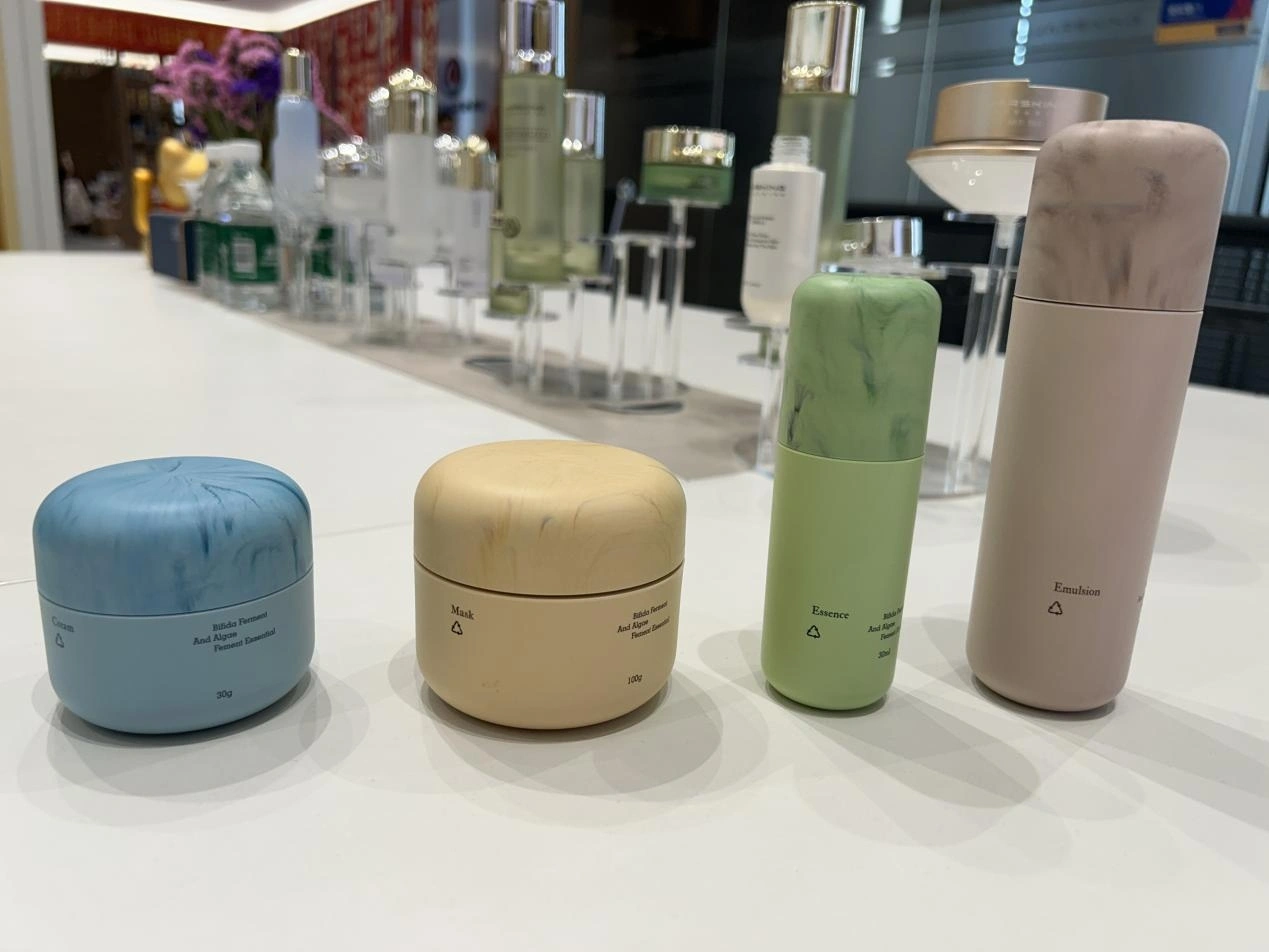
As industries continue to prioritize sustainability, calcium carbonate-based materials are becoming increasingly prominent in environmentally friendly packaging and production. Brands like Just Spring are leading the way with their sustainable packaging initiatives, incorporating 50% calcium carbonate materials into their eco-conscious designs. From energy-saving stone paper to biodegradable capsule cups, calcium carbonate is redefining the landscape of sustainable product innovation.
With its diverse applications across nutrition, cosmetics, pharmaceuticals, and sustainability, calcium carbonate remains an indispensable resource in modern industry. Its versatility, effectiveness, and eco-friendly potential continue to drive innovation, making it a vital component in the advancement of health, beauty, and environmental sustainability.
